
Before The Lord Of The Rings: The Rings Of Power season one debuted, Amazon Studios revealed it was moving its production hub for season two from New Zealand to the UK.
The decision, in line with the streamer’s strategy of expanding the production footprint and investing in studio spaces in the UK, and afforded the production the ability to access the UK’s tax incentive, “was above our paygrade” say J.D. Payne and Patrick McKay, the series showrunners and co-executive producers.
“We were happy to do that because Tolkien was here. It was the British Isles that he was inspired by,” McKay says.
“Also, starting up in the UK with the same cast, a lot of the same leadership, but then building a new crew, we could reboot in some ways. Having the chance to get a fresh bite of the apple in a way, probably paid off creatively,” he adds.
Though leaving behind the New Zealand crews was very bittersweet, McKay says “The UK crews are also some of the best in the world, and so there’s an institutional knowledge here that I’m sure benefited us in ways we can’t even begin to describe.”

Nonetheless, season two presented new challenges. Filming was split across multiple continents, as well as across the UK. “There were times when we had four units running at a time,” Payne says. “And one of those was off in the Canary Islands.”
Sections of season two were filmed on location in Tenerife, the largest of Spain’s Canary Islands which has a generous 50% tax rebate. Inland, the Rhûn scenes were situated in the Teide National Park, 4,000 meters above sea-level on the flanks of the volcano Mount Teide.
“The Canaries gave us a vast, wide-open landscape that felt fresh and new for Middle-earth,” says executive producer Lindsey Weber. “Spanish crews are excellent, and there is a great rebate for filmmakers which is always appreciated.”
Inland, filming took place in the Teide National Park, 4,000 meters above sea-level on the flanks of the volcano Mount Teide.
On its edges, Tenerife’s Charco de la Laja, a coastal pool formed of volcanic rock provided the location for a Númenórean Sea Trial. “One day the wind was super high. To make it safe for the crew we had to hold back while it was too windy to shoot and then come back in much later,” Payne reveals.
“That affects what shots they are able to get that day. Then you have to adjust in terms of the other shots you need to complete the scene. It’s like a Jenga tower and a Rubik’s Cube at once.”
McKay credits their co-producer and lead AD, UK-based Matthew Penry-Davey, whose credits include Paramount’s Annihilation and Disney’s Indiana Jones And The Dial Of Destiny, for managing the logistics.
Setting up shop in the UK

Pre-production on season two began in the UK in 2022, and ran concurrent with post-production on the first season, which took place in in New Zealand. When the news of the move reached the showrunners is a bit of a blur.
“It’s hard to remember exactly when we found out,” Payne says, but the move wasn’t necessarily a factor in how they wrote and structured season two.
“It’s all the same challenge,” McKay says. “There’s only so many hours in the day, and there’s only so many hours at night. There’s never enough time, and we want to turn these seasons around as fast as possible. You’re constantly battling the clock, and that’s true no matter where you are.”
McKay describes shooting season two as equivalent to “shooting three tentpole” films. “A movie has the benefit of only shooting for 100 days, maybe. We shoot for hundreds.”
Season two production took place from October 2022 to June 2023 and in addition to filming on-location, production also ran at Bovingdon Studios, a former Royal Air Force base, and Bray Studios, the latter of which Amazon Prime Video acquired in July.

For a season three, having a home base at Bray is a potential Payne and McKay are hesitant to speak on. “We should be careful here,” McKay says. “In some ways this is above our pay grade. It’s important in our jobs to do a little bit of everything, but what studio we’re based at next time — how and where — we shouldn’t be the ones to say that.”
One clear benefit of being in the space is access to the massive amounts of props, costumes, set pieces, and other items the production has created; all of which were transported there, not destroyed and remade.
“Many, many, many, many containers did the big journey,” McKay says. “Here in the UK, we have humongous stages and warehouses filled with our stock that we’re drawing on and then expanding upon. Maintenance of that and protection of that is all part of the gig.”
It’s all Middle-earth
Maintaining cohesion across seasons as locations changed was a high-priority concern for Weber. “Any adaptation of [Tolkein’s work] calls for a carefully crafted, thoughtfully made production.
”It is true that we didn’t want season one to look like New Zealand or season two to look like the UK; it all should look like Middle-earth.”
Still, “New Zealand will continue to be visually a part of the show for years to come,” Payne says. “We’ve done twenty-something hours of Aerial work [in New Zealand],” McKay reveals. Payne adds: “When you see characters running over mountaintops in season four, that will still be New Zealand.”
To achieve cohesion, McKay says everything hopefully “goes in the blender and it feels like some other place entirely. Like Middle-Earth.”





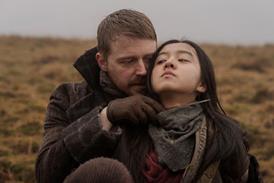
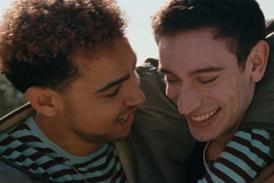
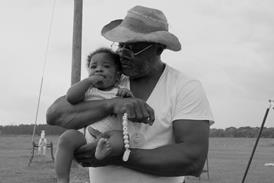

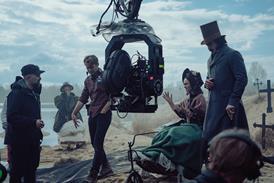



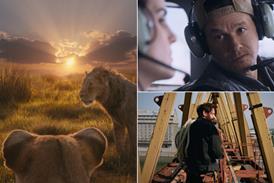
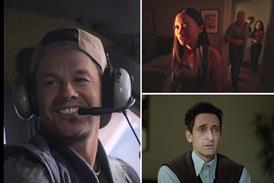


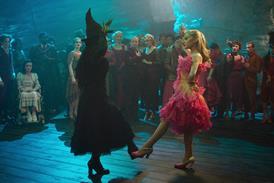







No comments yet